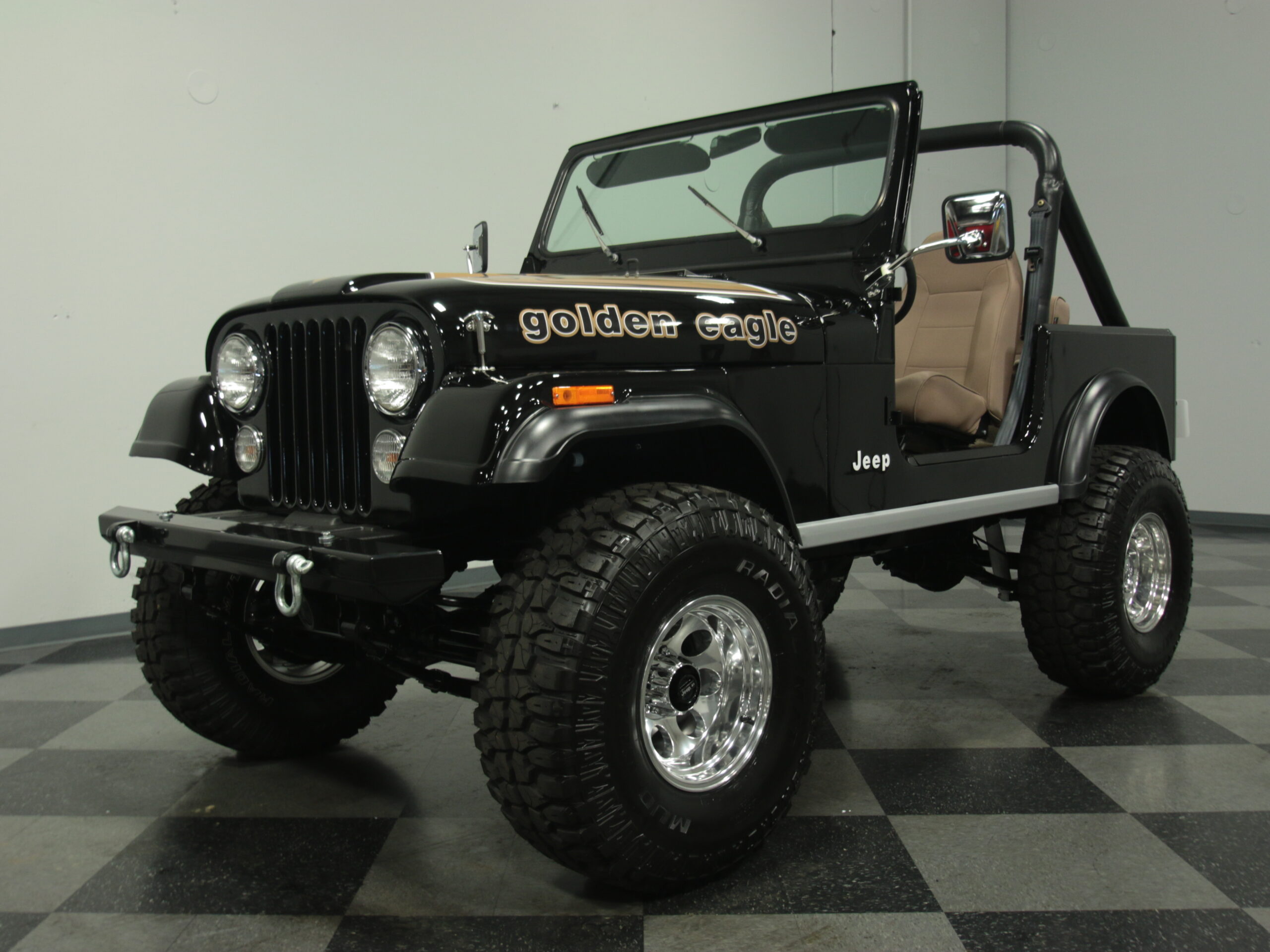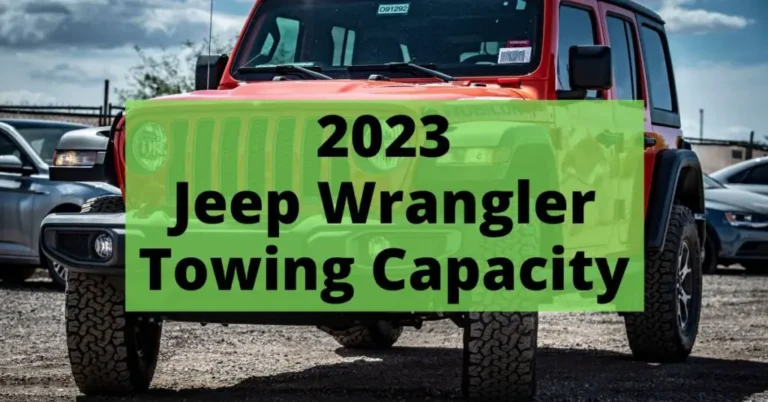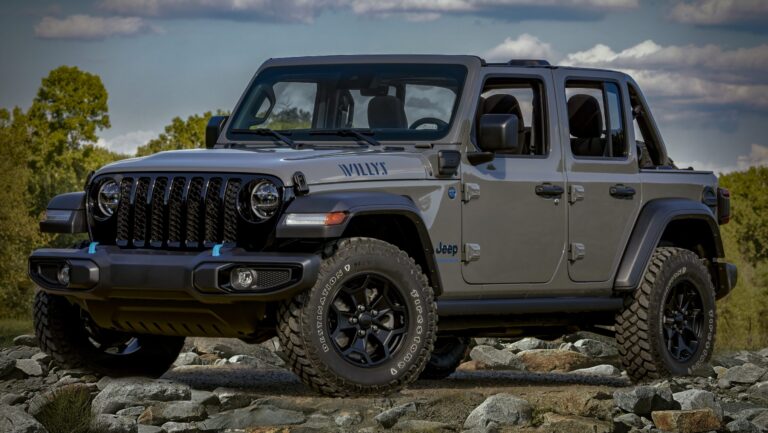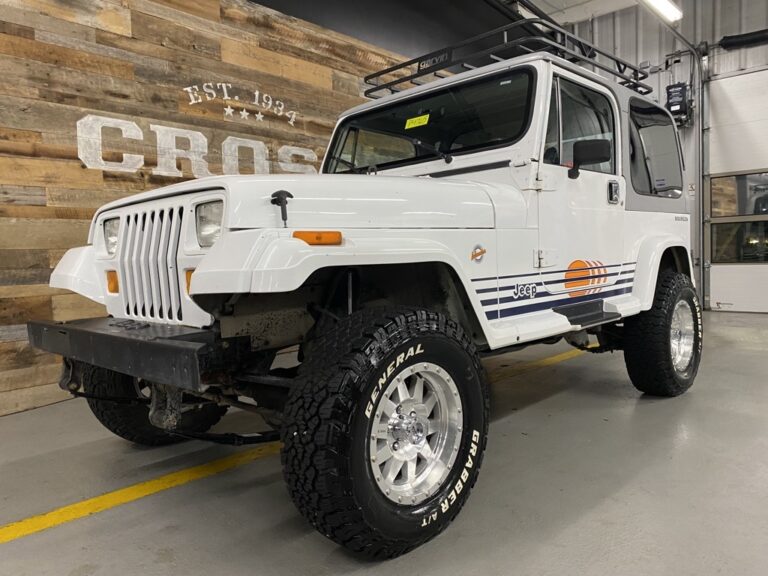Jeep Wrangler 1985 CJ7 For Sale: Your Guide to Acquiring an Off-Road Legend
Jeep Wrangler 1985 CJ7 For Sale: Your Guide to Acquiring an Off-Road Legend jeeps.truckstrend.com
The allure of a vintage Jeep is undeniable, and among the pantheon of off-road icons, the 1985 CJ7 holds a special place. Often mistakenly referred to as a "Wrangler" due to its iconic successor, the CJ7 is the quintessential Civilian Jeep, representing the culmination of decades of rugged evolution. For enthusiasts and collectors alike, finding a 1985 CJ7 for sale isn’t just about purchasing a vehicle; it’s about investing in a piece of automotive history, a symbol of freedom, and an endlessly customizable platform for adventure. This comprehensive guide will delve into everything you need to know when considering a 1985 CJ7, from its historical significance to practical buying advice, maintenance tips, and what to expect from ownership.
The Enduring Appeal of the 1985 Jeep CJ7
Jeep Wrangler 1985 CJ7 For Sale: Your Guide to Acquiring an Off-Road Legend
The Jeep CJ series, short for "Civilian Jeep," traces its lineage directly back to the military Willys MB of World War II. Over the decades, it evolved, adapting to civilian needs while retaining its core ruggedness and go-anywhere capability. The CJ7, introduced in 1976, was a significant step forward from its predecessor, the CJ5. With a wheelbase extended by 10 inches, the CJ7 offered improved stability, more interior space, and the ability to accommodate an automatic transmission, making it a more versatile vehicle for everyday use without sacrificing its legendary off-road prowess.
The 1985 model year is particularly significant for several reasons. It marked the last full production year for the CJ7 before the introduction of the square-headlighted Wrangler YJ in 1987. This makes the ’85 CJ7 a final iteration of the classic round-headlight design, embodying the purest form of the Civilian Jeep. Its simplicity, robust mechanicals, and the vast aftermarket support make it a highly desirable classic. Owners are drawn to its:
- Timeless Design: The iconic open-top, removable doors, and fold-down windshield are hallmarks of the CJ7’s classic appeal.
- Unmatched Off-Road Capability: A short wheelbase, solid axles, and strong 4×4 system ensure it can tackle nearly any terrain.
- Simplicity and Repairability: Without complex electronics, the CJ7 is relatively easy to work on, making it a favorite for DIY mechanics.
- Customization Potential: From mild to wild, the CJ7 is a blank canvas for modifications, allowing owners to tailor it to their specific needs, whether for hardcore off-roading or a nostalgic cruiser.
- Nostalgic Value: For many, the CJ7 represents a bygone era of motoring, evoking memories of simpler times and pure, unadulterated driving fun.

Key Considerations When Buying a 1985 CJ7
Acquiring a 1985 CJ7 requires careful consideration, as these vehicles are nearly four decades old. Their condition can vary wildly, from rusted-out projects to meticulously restored showpieces.
1. Condition is Paramount: The Rust Monster
The Achilles’ heel of nearly every vintage CJ7 is rust. Inspect the vehicle thoroughly, paying close attention to:

- Frame: The main frame rails, especially near the skid plate, body mounts, and rear shackle mounts. Rust here can be structural and costly to repair.
- Body Tub: Floorboards, rocker panels, rear wheel wells, and the area around the roll bar mounts are common rust traps.
- Fenders and Hood: Especially where dirt and moisture can accumulate.
- Windshield Frame: Prone to rust at the bottom where it meets the cowl.

A solid, rust-free frame and body tub are the most important factors, as mechanical components can often be replaced or rebuilt more easily.
2. Engine Options and Their Characteristics
In 1985, the primary engine options for the CJ7 were:
- 2.5L (150 cu in) AMC I4: A four-cylinder engine offering decent fuel economy but limited power for serious off-roading or highway speeds.
- 4.2L (258 cu in) AMC I6: The most popular and highly regarded engine for the CJ7. This inline-six is known for its legendary torque, reliability, and simplicity. It’s often preferred for its robust nature and ample power for both street and trail.
- 5.0L (304 cu in) AMC V8: While the 304 V8 was offered in earlier CJ7s, it was largely phased out by 1985 due to stricter emissions and fuel economy standards. If found, it offers more power but worse fuel economy. Many V8 CJ7s you find will be aftermarket engine swaps.
Focus on the 4.2L I6 if you want a balance of power, reliability, and ease of maintenance.
3. Transmission and Transfer Case
Manual transmissions were common, including the T-4, T-5, and the heavy-duty T-176. The automatic option was the Torqueflite 999 (TF999). Ensure the transmission shifts smoothly, and the clutch (if manual) operates correctly.
The transfer case was typically the Dana 300, a robust and reliable unit that allowed for true 4×4 operation. Test the 4×4 engagement (2H, 4H, 4L) to ensure it works without grinding or popping out of gear.
4. Axles and Suspension
The 1985 CJ7 typically came with a Dana 30 front axle and an AMC 20 rear axle. While the Dana 30 is generally solid, the AMC 20 is known for weak axle tubes that can bend or fail under heavy stress, especially with larger tires. Look for signs of upgrades (e.g., one-piece axle shafts) or a swapped Dana 44 rear axle, which is a desirable modification. Check for worn leaf springs, shocks, and steering components (tie rods, ball joints).
5. Documentation and History
A clear title is essential. Maintenance records, if available, can provide valuable insight into the vehicle’s history and care. Inquire about any past accidents or major repairs.
A Buyer’s Guide: Navigating the Purchase Process
1. Where to Look:
- Online Marketplaces: eBay Motors, Craigslist, Facebook Marketplace are common. Be wary of scams and always verify the seller and vehicle in person.
- Specialized Forums & Groups: Dedicated Jeep CJ forums and Facebook groups are excellent resources, often listing vehicles for sale by enthusiasts.
- Classic Car Dealerships/Auctions: Sites like Bring a Trailer or Mecum Auctions often feature higher-quality or restored examples, usually at a premium.
- Local Classifieds: Sometimes hidden gems can be found in local papers or community boards.
2. The Inspection: Don’t Skip It!
- Pre-Purchase Inspection (PPI): If you’re serious, hire a qualified mechanic specializing in older Jeeps or off-road vehicles to perform a thorough PPI. This is money well spent.
- Visual Inspection: Look for fluid leaks (engine, transmission, transfer case, axles), odd wiring, patched-up bodywork, and evidence of previous accidents or poor repairs.
- Undercarriage: Bring a flashlight and a creeper. Examine the frame for rust, cracks, and bad welds. Check suspension components, brake lines, and fuel lines.
- Interior: Check gauges, lights, heater, and wiper operation. Look for water damage or mold.
3. The Test Drive:
- Cold Start: Listen for unusual noises (knocks, ticks, excessive smoke).
- Steering: Check for excessive play, wandering, or vibrations.
- Brakes: Ensure they stop the vehicle smoothly without pulling.
- Transmission: Test all gears, including reverse. For manuals, check clutch engagement.
- 4×4 System: Find a safe, open area to engage 4-high and 4-low. Listen for clunking or grinding.
- On-Road Manners: Be realistic; a CJ7 won’t ride like a modern SUV. But it shouldn’t feel unsafe or uncontrollable.
4. Negotiation:
Arm yourself with market knowledge. Research recently sold CJ7s in similar condition. Be prepared to walk away if the price doesn’t align with the vehicle’s condition or your budget.
Ownership and Customization: Life with a CJ7
Owning a 1985 CJ7 is a rewarding experience, but it comes with its own set of considerations.
1. Maintenance:
While mechanically simple, a vintage vehicle requires consistent attention. Regular oil changes, fluid checks, and lubrication are essential. Be prepared for occasional repairs, as components will wear out over time. Fortunately, the robust aftermarket means parts are readily available.
2. Common Upgrades and Modifications:
The CJ7’s modular design makes it highly customizable:
- Lift Kits: To accommodate larger tires for increased ground clearance and off-road capability.
- Tires and Wheels: A wide array of options to suit different terrains and aesthetic preferences.
- Engine Swaps: Popular upgrades include modern fuel-injected AMC 4.0L I6s or even V8 conversions for more power and reliability.
- Axle Upgrades: Replacing the AMC 20 rear axle with a Dana 44 or Ford 8.8 is a common strength upgrade.
- Interior Refresh: New seats, carpet, dash components, and modern audio systems can greatly improve comfort.
- Safety Enhancements: While not a modern car, upgrades like three-point seatbelts, better lighting, and a fire extinguisher are wise additions.
3. Potential Challenges and Solutions:
- Rust Recurrence: Even after repair, rust can return. Regular cleaning and rust prevention treatments are crucial.
- Fuel Economy: Especially with the 4.2L I6 and larger tires, fuel efficiency is not a strong suit.
- Lack of Modern Comforts: No airbags, ABS, or power windows. Embrace the raw, connected driving experience.
- Road Noise and Vibrations: CJ7s are not quiet, smooth cruisers. They are rugged utility vehicles.
- Emissions: Check local regulations. Older vehicles may be exempt or have specific requirements.
The solution to most challenges lies within the passionate CJ7 community. Forums, clubs, and specialized shops offer a wealth of knowledge and support.
Price Table: Estimated Values for a 1985 Jeep CJ7
It’s crucial to understand that prices for a vintage vehicle like the 1985 CJ7 fluctuate wildly based on condition, originality, modifications, geographic location, and market demand. The table below provides a general range:
| Condition Category | Description | Estimated Price Range (USD) |
|---|---|---|
| Project Vehicle | Significant rust, non-running or major mechanical issues, needs full restoration. | $3,000 – $8,000 |
| Driver Quality | Runs and drives, cosmetic flaws, some surface rust, might need minor mechanical work, suitable for light use. | $9,000 – $18,000 |
| Good Condition | Solid frame, minimal rust, well-maintained mechanically, presentable appearance, ready to enjoy. | $19,000 – $30,000 |
| Excellent/Restored | Near-flawless, professional restoration or exceptionally well-preserved original, show-quality, or highly desirable tasteful modifications. | $30,000 – $60,000+ |
Disclaimer: These are approximate values and can vary. A rare trim package, unique factory options, or specific desirable modifications can push prices higher. Always perform your own research and inspection.
Frequently Asked Questions (FAQ)
Q: Is a 1985 CJ7 technically a "Wrangler"?
A: No, the "Wrangler" designation began with the YJ series in 1987. The CJ7 is the direct predecessor to the Wrangler and belongs to the Civilian Jeep (CJ) family.
Q: What are the most common rust spots on a CJ7?
A: Frame rails (especially near body mounts and shackle hangers), body tub floorboards, rocker panels, rear wheel wells, and the windshield frame are the most common areas.
Q: Which engine is best for a 1985 CJ7?
A: The 4.2L (258 cu in) inline-six is widely considered the best for its balance of torque, reliability, and ease of maintenance and modification.
Q: Are parts readily available for a 1985 CJ7?
A: Yes, due to its popularity and long production run, aftermarket support for the CJ7 is excellent. Most mechanical, electrical, and body parts are readily available.
Q: Is a CJ7 a good daily driver?
A: It can be, but it lacks modern comforts, safety features, and fuel economy. It’s often better suited as a weekend vehicle, a dedicated off-roader, or for those who appreciate a raw driving experience.
Q: How much should I budget for a full restoration?
A: A professional, body-off restoration can easily cost upwards of $20,000-$50,000, often exceeding the initial purchase price of a project vehicle. DIY restoration can be significantly cheaper but requires considerable time and skill.
Q: What should I look for in the frame specifically?
A: Inspect for cracks, severe rust perforation (holes), and poor-quality weld repairs. Use a small hammer to gently tap areas; a dull thud indicates solid metal, while a hollow sound or easily dented metal suggests severe rust.
Conclusion
The 1985 Jeep CJ7 stands as a testament to rugged simplicity and timeless design. For those seeking an authentic, unadulterated off-road experience or a classic vehicle with immense character, the CJ7 presents a compelling option. While purchasing one requires diligence, particularly in assessing its condition and rust levels, the rewards of ownership are immeasurable.
Whether you envision tackling challenging trails, cruising down scenic backroads with the top off, or simply owning a piece of American automotive history, a well-chosen 1985 CJ7 offers a unique blend of adventure, customization, and classic appeal. It’s more than just a vehicle; it’s a lifestyle, a statement, and a canvas for countless memories yet to be made. Embrace the journey, and you’ll find that the spirit of the CJ7 truly endures.




